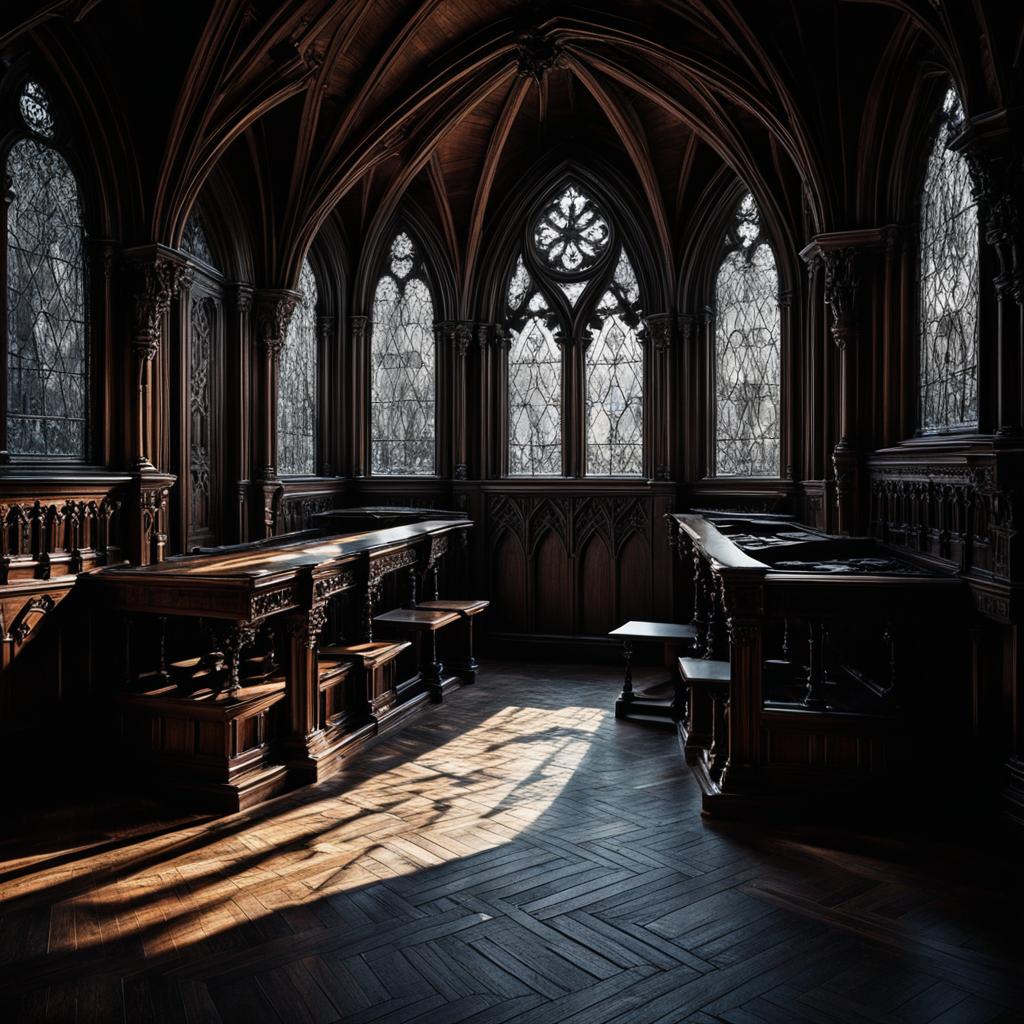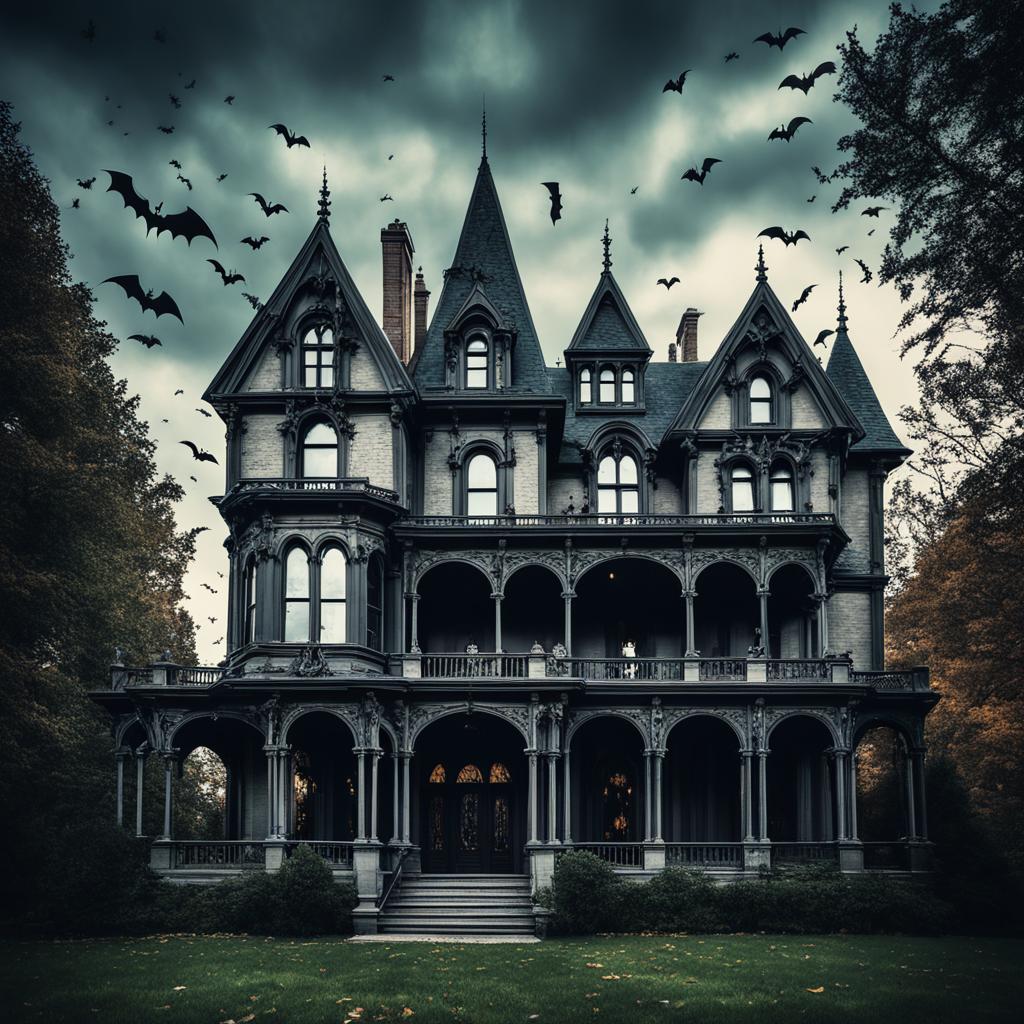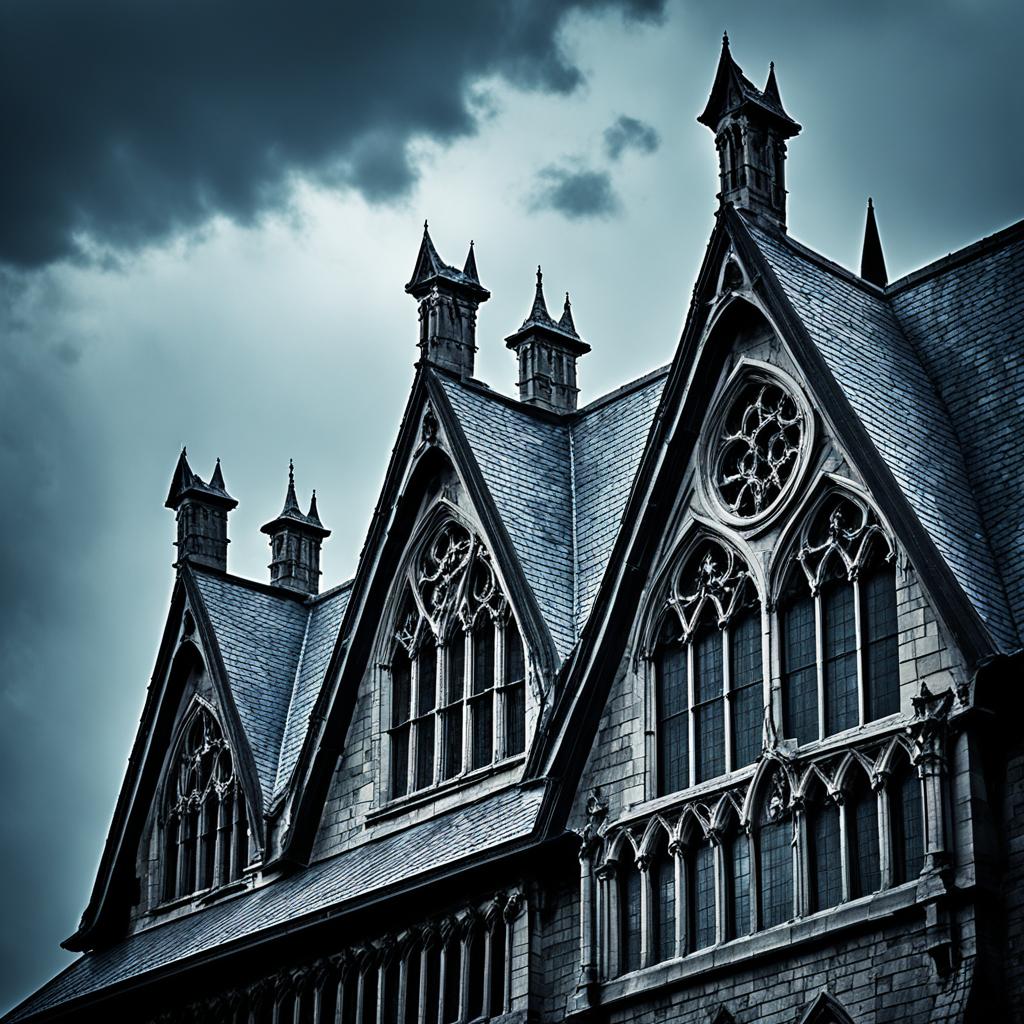Venture into gothic houses’ captivating world. These architectural Victorian marvels radiate dark elegance. Ornate details like pointed arches, turrets, and gargoyles fascinate.
Haunted mansions boast mysterious gothic charm. Intricate woodwork adds to irresistible allure. Step inside to shadowy corridors, vaulted ceilings.
Stained glass windows cast ethereal glow. Macabre decor creates eerie atmosphere. Ghostly tales lurk in haunted history.
Key Takeaways
- Gothic houses feature ornate architectural details like pointed arches, turrets, and gargoyles.
- The interiors boast shadowy corridors, vaulted ceilings, and stained glass windows.
- These haunted mansions create a mysterious and gothic charm.
- The macabre decor and gloomy aesthetics evoke ghostly tales and a haunted history.
- The eerie atmosphere and spooky interiors captivate visitors with their haunting beauty.
The Origins of Gothic Architecture
The medieval Gothic architecture emerged in France. It broke away from Romanesque style. The intricate designs took up to 100 years to construct. This ornate ironwork showcased innovative elements. It was characterized by pointed arches, ribbed vaults, and flying buttresses.

Rise of the Gothic Style
The Basilica of Saint Denis exemplifies Gothic architecture. The Notre Dame Cathedral in Paris also exemplifies it. Its construction started in 1163. It influenced other cathedrals of that time. This eerie ambiance defined the Gothic style. It was prevalent in Europe from late 12th to 16th century. Its origins were in Île-de-France and Picardy regions.
Influence of Catholicism
Gothic architecture’s rise was tied to Catholicism’s influence. The grandeur of medieval cathedrals was impressive. The pointed arch was Gothic’s defining element. It allowed taller, ornate structures. These created shadowy ambiance in sacred spaces.
Architectural Style Wars
During the Renaissance and Reformation, Gothic fell out of favor. Classicism and Church of England distanced from Catholic symbolism. This led to Gothic vs classical style wars. It reflected religious tensions then. However, Gothic continued to flourish in some regions. Like England and Belgium, until 16th century. Gargoyle sculptures and wrought iron remained style hallmarks.
| Gothic Architecture | Renaissance Architecture |
|---|---|
| Originated in France | Originated in Italy |
| Characterized by pointed arches, ribbed vaults, and flying buttresses | Characterized by classical elements, symmetry, and harmony |
| Ornate details, gargoyle sculptures, and wrought iron details | Emphasis on simplicity and proportion |
| Commonly found in cathedrals, churches, and ecclesiastical buildings | Used in palaces, villas, and civic buildings |
Gothic revivals began in mid-18th century England. They spread through 19th-century Europe and continued into 20th century. Primarily for churches and university buildings. This revival embraced eerie ambiance and ornate Gothic details. It revived gargoyle statues and shadowy ambiance.
Haunting Gothic Mansions
Gothic mansions captivate the imagination. They exude an eerie atmosphere. These structures are steeped in haunted legends and spooky tales.
They are a testament to the gothic revival architectural style’s enduring allure.
Eerie Atmosphere and Ambiance
Approaching a Gothic mansion unsettles. Towering castle-like features cast long foreboding shadows. The homes’ dark aesthetics create a supernatural atmosphere.
Turrets and spires beckon visitors into the realm of the macabre.
Macabre Details and Decor
Gothic mansions adorn macabre elements. Carved gargoyles perch menacingly, guarding secrets. Ornate woodwork and wrought iron fences add mystery.
Intricate patterns hint at untold tales and forgotten lore.
Ghostly Tales and Legends
Many haunted mansions shroud in ghostly tales and legends. Stories of restless spirits and unexplained phenomena captivate visitors.
Tragic pasts fuel the imagination with an air of the supernatural.
| Literary Work | Time Period | Geographical Location |
|---|---|---|
| “The Fall of the House of Usher” by Edgar Allan Poe | 1830s | N/A (Fictional) |
| “The House of the Seven Gables” by Nathaniel Hawthorne | 1850s | Massachusetts, United States |
| “The Weird of the Walfords” by Louisa Brown | 1889 | English Countryside |
Gothic mansions stand as enduring dark romanticism symbols. These spooky homes intrigue and inspire.
They invite us to unravel mysteries lurking in shadowy corners.
Gothic House Exteriors
Gothic houses exhibit striking exteriors. Their gabled roofs have turrets and spires, creating an imposing skyline silhouette. These medieval-inspired architectural elements evoke supernatural vibes and gloomy ambiance.

Ornate wrought iron gates and fences surround these ominous structures. These metalworks, often adorned with gargoyle ornaments, beckon visitors while warning of the creepy interiors.
Gabled Roofs and Turrets
The gabled roofs and turrets symbolize Gothic houses’ macabre style. Their sharp angles and pointed spires evoke foreboding, reaching heavenward in Gothic grandeur.
Wrought Iron Gates and Fences
Intricate wrought iron gates and fences, adorned with gargoyles, form symbolic barriers. They simultaneously beckon and warn visitors of the eerie atmosphere inside.
Gothic Revival Architecture
The 19th century Gothic Revival embraced medieval inspiration and vaulted ceilings. It reintroduced supernatural vibes and gloomy ambiance to residential structures, after the Renaissance.
| Gothic House | Location | Sale Price | Notable Features |
|---|---|---|---|
| Kat Von D’s Gothic Mansion | California | $6.5 million (2016) | Gabled roofs, turrets, wrought iron fences |
| Victorian Gothic Townhouse | California | $2.6 million (2022) | Gothic Revival architecture, macabre details |
| “Goth House” | Illinois | $260,000 (2022) | All-black exterior, gargoyle ornaments |
| Carson Mansion | California | $35,000 (1950) | Gabled roofs, vaulted ceilings, dark interiors |
| Black Victorian Home | New York | N/A | Red brick exterior, white millwork, Gothic Revival style |
Gothic House Interiors
Entering a Gothic house, you’re greeted by striking interior elements contributing to a haunting dark ambiance. Shadowy corridors lined with vaulted ceilings and ornate woodwork create a sense of grandeur and mystery. Stained glass windows cast colorful, ethereal hues, while gargoyles and wrought iron accents add macabre intrigue.
Shadowy Corridors and Vaulted Ceilings
The gothic revival style embraced dramatic architectural features evoking mystery and grandeur. Dimly lit shadowy corridors with high vaulted ceilings create awe and wonder, contributing to the dark ambiance. These hallways lead to grand rooms adorned with intricate woodwork and ornate details transporting visitors back.
Exquisite ornate woodwork and stained glass windows are essential Gothic house interior elements. Heavily carved wooden paneling, beams, and furniture showcase skilled craftsmanship, while stained glass windows cast a kaleidoscope of colors. These iconic features complemented gargoyles and macabre elements, adding Gothic charm.

The table showcases Gothic house interiors’ enduring popularity, with decor items featuring wrought iron, gargoyles, and macabre elements capturing the gothic revival style’s essence:
| Product Category | Item | Price Range |
|---|---|---|
| Lighting | Baroque Skeleton Lamps (7 editions) | £150.00 – £250.00 |
| Ornaments | Skull Ornaments (12 designs) | £35.00 – £65.00 |
| Candles | Gothic Candles (various sizes) | £13.00 – £20.00 |
| Furniture | Skeleton Floor Lamp | £650.00 – £660.00 |
| Architectural | Gothic Window Designs (Oculus, Victor) | £450.00 – £600.00 |
These features revive medieval architecture’s captivating aesthetic with gabled roofs, turrets, and a hauntingly beautiful dark ambiance.
Gothic Fiction and Horror Literature
Gothic fiction and horror literature intertwine with haunting Gothic houses and architecture. These chilling tales weave macabre designs, ghostly legends, and Victorian mansions, creating eerie intrigue that captivates readers.
Bram Stoker’s Dracula
Bram Stoker’s “Dracula” exemplifies how Gothic fiction incorporates haunting settings. Count Dracula’s imposing castle, surrounded by graveyards and bat-infested towers, sets the stage for his macabre exploits. The Gothic architecture and cemetery atmosphere contribute to the novel’s spine-tingling ambiance, making it a classic in the genre.

Mary Shelley’s Frankenstein
Mary Shelley’s “Frankenstein” incorporates Gothic elements, with the creature’s creation in a secluded Victorian mansion. The haunting ambiance of the mansion adds to the ghostly legends, creating unease and mystery permeating the narrative.
| Gothic Fiction Elements | Prevalence in Novels |
|---|---|
| Gothic houses as central settings | 100% |
| Horror themes set in Gothic homes | 100% |
| Technologically advanced Gothic houses | 33.3% |
| Colonial Gothic house settings | 16.7% |
| Gothic school settings | 33.3% |
| Decaying Gothic familial estates | 16.7% |
Gothic houses and mansions frequently serve as central locations where supernatural events unfold in Gothic fiction and horror literature. The genre explores decay, stagnation, and haunting unresolved pasts, embodied in these haunting abodes’ architectural styles and atmospheric qualities.
Dark and Mysterious Aesthetic
Gothic houses captivate with a dark, mysterious allure. From spooky chateaus to macabre estates, these haunting residences transform ordinary abodes into eerie castles.
Challenging the imagination, grim fortresses exude an intriguing aesthetic that enthralls visitors.
Gargoyles and Macabre Elements
Gothic revival architecture features gargoyles and macabre elements adorning facades. These hauntingly carved figures lend a sense of foreboding, inviting curious onlookers to uncover secrets.

Gloomy Ambiance and Shadowy Corners
Step inside, enveloped by a gloomy ambiance and shadowy corners. Dim lighting and ornate detailing evoke unease, as walls seem to hold haunted history.
From intricate wrought-iron gates to Gothic farmhouse designs exuding charm and character, these architectural marvels celebrate the dark allure.
Gothic attic bedrooms offer romantic ambiance under rafters, while living rooms showcase Gothic splendor fused with contemporary design.
The enduring appeal transports visitors to a realm where reality and macabre blur, leaving an indelible mark on imagination.
Modern Gothic Homes
In modern times, Gothic style has found new life in residential designs. Homeowners and builders embrace the macabre aesthetics, creating haunting ambiances and spooky designs. These evoke a sense of dark and mysterious aesthetic.
From Gothic Bloxburg homes to brooding and shadowy interiors, new interpretations celebrate wrought iron fences, ornate details, and a captivating aesthetic. This pays homage to the Gothic tradition.
Gothic Bloxburg House Builds
The game Bloxburg has seen Gothic-inspired builds where players create haunting homes. These virtual Gothic mansions often have wrought iron fences, gargoyle statues, and gloomy colors, capturing macabre aesthetics.
Players unleash creativity, crafting spooky designs transporting visitors to a world of eerie charm and haunting ambiance.
Dark and Brooding Interiors
Modern Gothic homes embrace dark and brooding interiors amplifying the dark and mysterious aesthetic. Dimly lit corridors with Gothic chandeliers and candelabras create drama and intrigue.
Ornate fireplaces, tapestries, and shadowy interiors lend an air of melancholy and mystery. These captivating spaces celebrate the macabre aesthetics of the Gothic tradition.

| Property | Location | Details | Price |
|---|---|---|---|
| Dalmoak Castle | Dumbarton, Scotland | Built in 1869, 14 bedrooms | £795,000 |
| Barri Gòtic Apartment | Barcelona, Spain | 1 bedroom, 1,991 sq ft | €920,000 |
| Hadlow Tower | Kent, England | Constructed in 1838, 4 bedrooms | £2 million |
| Gothic Revival House | New York State, USA | Built in 1862, 9 bedrooms | $3.595 million |
Whether virtual Bloxburg builds or real marvels, Gothic homes’ timeless allure continues captivating and inspiring. They offer a haunting ambiance and dark and mysterious aesthetic celebrating the macabre.
Gothic House Photography and Art
Gothic houses captivate artists, photographers. Their haunting beauty, eerie charm inspire. Medieval castle-like structures adorn turrets, wrought iron gates. They evoke timelessness, grandeur. Perfectly embodying macabre style, gloomy atmosphere.
Haunting Black and White Imagery
Photographers drawn to Gothic aesthetic. Capturing essence through haunting black, white imagery. Monochromatic depictions highlight intricate masonry, ornate details. Casting aura of mystery, timelessness. Stark light, shadow contrast accentuates imposing silhouettes.
Turrets, towers pierce sky. Surrounded by intricate wrought iron gate patterns.
Gothic House Illustrations
Artists find inspiration in Gothic houses. Illustrations explore macabre style, gloomy atmosphere. Through intricate details, imaginative interpretations. Showcasing Gothic elements like gargoyles, vaulted ceilings.
Ornate woodwork allows immersion. Into haunting architectural wonders. Through imaginative renderings, artists breathe life. Solidifying enduring allure of captivating structures.
